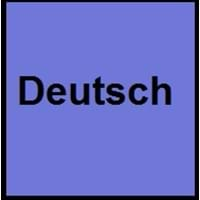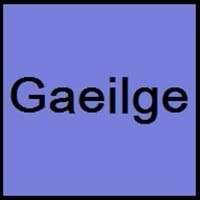Countries
Austria, Belgium, Germany, Italy, Liechtenstein, Luxembourg, Switzerland
European Union, Ireland
National Language
Germany
Ireland
Second Language
North Dakota, United States of America
Ireland
Speaking Continents
Europe
Europe
Minority Language
Czech Republic, Denmark, Former Soviet Union, France, Hungary, Italy, Namibia, Poland, Romania, Slovakia, Slovenia
United Kingdom
Regulated By
Council for German Orthography
Foras na Gaeilge
Interesting Facts
- One of the large group of Indo-Germanic languages is German.
- The second most popular Germanic language spoken today behind English is German language.
- In Irish language, there are no exact words for "yes" or "no".
- There are different set of numbers for counting humans and another set for counting non-humans in Irish Language.
Similar To
Dutch, Danish, Norwegian, Swedish and English Languages
Not Available
Derived From
Albanian Languages
Not Available
Alphabets in
German-Alphabets.jpg#200
Irish-Alphabets.jpg#200
Writing Direction
Left-To-Right, Horizontal
Left-To-Right, Horizontal
Thank You
Danke
Go raibh maith agat
How Are You?
Wie geht es dir?
Conas atá tú ?
Good Night
gute Nacht
Oíche mhaith
Good Evening
guten Abend
Tráthnóna maith duit
Good Afternoon
guten Tag
Tráthnóna maith duit
Good Morning
guten Morgen
Dia dhuit ar maidin
Sorry
Verzeihung
Tá brón orm
I Love You
Ich liebe dich
Is breá liom thú
Excuse Me
Entschuldigung
Gabh mo leithscéal
Dialect 1
Swiss German
Connacht Irish
Where They Speak
Switzerland
Connacht
How Many People Speak
Not Available
Dialect 2
Swabian German
Munster Irish
Where They Speak
Germany
Munster
How Many People Speak
Not Available
Dialect 3
Texas German
Ulster Irish
Where They Speak
Texas
Ulster
How Many People Speak
Not Available
Speaking Population
Not Available
Native Name
Deutsch
Gaeilge (na hÉireann) / An Ghaeilge
Alternative Names
Deutsch, Tedesco
Erse, Gaeilge, Gaelic Irish
French Name
allemand
irlandais moyen
German Name
Deutsch
Mittelirisch
Pronunciation
[ˈdɔʏtʃ]
[ˈɡeːlʲɟə]
Ethnicity
Germans
Irish people
Origin
6th Century AD
c. 750
Language Family
Indo-European Family
Indo-European Family
Early Forms
No early forms
Primitive Irish, Old Irish, Middle Irish, Classical Irish, Irish
Standard Forms
German Standard German, Swiss Standard German and Austrian Standard German
An Caighdeán Oifigiúil
Language Position
Not Available
Signed Forms
Signed German
Irish Sign Language
Scope
Individual
Individual
ISO 639 6
deus
Not Available
Glottocode
high1287, uppe1397
iris1253
Linguasphere
52-ACB–dl & -dm
50-AAA
Language Type
Living
Living
Language Linguistic Typology
Subject-Object-Verb, Subject-Verb-Object
Verb-Subject-Object
Language Morphological Typology
Fusional, Synthetic
Fusional
All German and Irish Dialects
Most languages have dialects where each dialect differ from other dialect with respect to grammar and vocabulary. Here you will get to know all German and Irish dialects. Various dialects of German and Irish language differ in their pronunciations and words. Dialects of German are spoken in different German Speaking Countries whereas Irish Dialects are spoken in different Irish speaking countries. Also the number of people speaking German vs Irish Dialects varies from few thousands to many millions. Some of the German dialects include: Swiss German, Swabian German. Irish dialects include: Connacht Irish , Munster Irish. Also learn about dialects in South American Languages and North American Languages.
German and Irish Speaking population
German and Irish speaking population is one of the factors based on which German and Irish languages can be compared. The total count of German and Irish Speaking population in percentage is also given. The percentage of people speaking German language is 1.39 % whereas the percentage of people speaking Irish language is Not Available. When we compare the speaking population of any two languages we get to know which of two languages is more popular. Find more details about how many people speak German and Irish on German vs Irish where you will get native speakers, speaking population in percentage and native names.
German and Irish Language Codes
German and Irish language codes are used in those applications where using language names are tedious. German and Irish Language Codes include all the international language codes, glottocodes and linguasphere.





